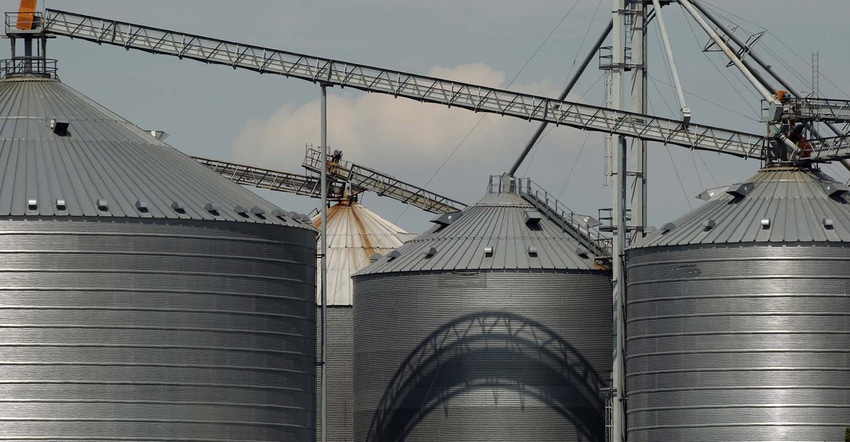
Tis the season. Those with crop in the bin are deciding if they should sell it, or keep storing in hopes of a further price rally in grain futures.
First notice day for July grain futures is next Tuesday, June 30. That means anyone who is long July grain contracts in the futures market needs to exit those long positions by the close of business on Monday, or be at risk of physical delivery. It also means that farmers who were using basis contracts (based off the July futures contracts) for cash marketing, must decide very soon to either price out the contract or roll it out to September. The question really boils down to, “Is there any bullish news out there?”
Corn and soybean futures have been in a steady uptrend since late April. However, this week the uptrend on charts for corn has been broken, and soybean futures are on the cusp of losing their grip on the uptrend as well. Can prices recover and continue a summer rally from here? The next 6 business days of trading will likely prove to be volatile as July option expiration, first notice day for July futures, the quarterly stocks report, the planted acreage report, month end, quarter end, and a shortened holiday trading week are upon us! I’ll be curt, for grain prices to resume an uptrend, we need the U.S. Dollar to drop, a friendly USDA report on the 30th, and weather issues somewhere in the world during July. Still wondering what to do? Let’s take it a step further and look deeper at the notion of price or roll.
Price
If you are of the opinion that grain prices will continue lower, then it makes sense to price out the contract. This means that you will call the elevator, take the current July futures price and apply the basis already locked in. Boom. The decision is made, and the grain is priced.
For many, the price is not glamorous. And for some, you may already be thinking, “But what if prices DO actually rally in the coming weeks!?” You may then potentially feel like you were “foolish” for pricing “too soon.”
Fear not. This is where it might make sense for you to re-own on paper with a call option.
If you purchase a September call option, it will expire on August 21, 2020. You will have nearly two months to know if there was a drought, or a bullish USDA report. The cost is anywhere from 6 cents to 12 cents per contract for corn (plus commission/fees). If the futures market rallies, you have the ability to take part in the rally. If prices do not rally, the most you can lose is the expense(s) paid for the call option.
Roll
If you are of the opinion that prices will rally in the coming weeks, then consider rolling your basis contract. Most likely you will roll to the September contract, pay the elevator a fee to roll, plus the spread difference between the July and September contract.
If the market rallies, you will capture the futures price gain. If prices do NOT rally, then you are at risk of further price decline, and potentially cleaning out your bins near the harvest low price, which often times happens in late August to mid-September.
If you go this route, consider managing your price risk with a September put option. This also expires on August 21, 2020 and will help give you a price floor just in case the USDA gives us a bearish report, and the weather is perfect all summer.
To purchase a September corn put, the price is anywhere between 6 and 14 cents (plus commission/fees) depending on which strike price you use.
Many price scenarios can unfold in the coming days. Manage your risk. Be ready for any surprise (after all, it is the year 2020). Sit down and do the math and decide which scenario, price or roll, is best for your farm business. If you have any questions, free feel to give me a call.
Reach Naomi Blohm: 800-334-9779 Twitter: @naomiblohm and [email protected]
Disclaimer: The data contained herein is believed to be drawn from reliable sources but cannot be guaranteed. Individuals acting on this information are responsible for their own actions. Commodity trading may not be suitable for all recipients of this report. Futures and options trading involve significant risk of loss and may not be suitable for everyone. Therefore, carefully consider whether such trading is suitable for you in light of your financial condition. No representation is being made that scenario planning, strategy or discipline will guarantee success or profits. Any decisions you may make to buy, sell or hold a futures or options position on such research are entirely your own and not in any way deemed to be endorsed by or attributed to Total Farm Marketing. Total Farm Marketing and TFM refer to Stewart-Peterson Group Inc., Stewart-Peterson Inc., and SP Risk Services LLC. Stewart-Peterson Group Inc. is registered with the Commodity Futures Trading Commission (CFTC) as an introducing broker and is a member of National Futures Association. SP Risk Services, LLC is an insurance agency and an equal opportunity provider. Stewart-Peterson Inc. is a publishing company. A customer may have relationships with all three companies. SP Risk Services LLC and Stewart-Peterson Inc. are wholly owned by Stewart-Peterson Group Inc. unless otherwise noted, services referenced are services of Stewart-Peterson Group Inc. Presented for solicitation.
The opinions of the author are not necessarily those of Farm Futures or Farm Progress.
About the Author(s)
You May Also Like






